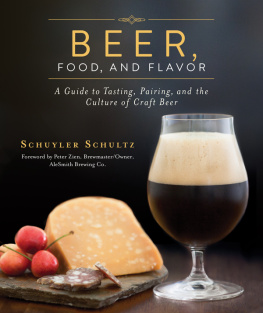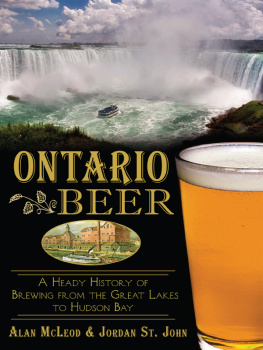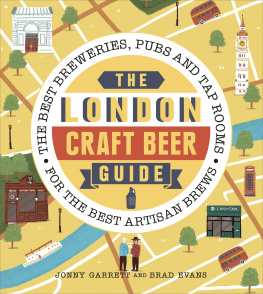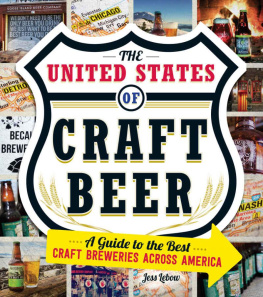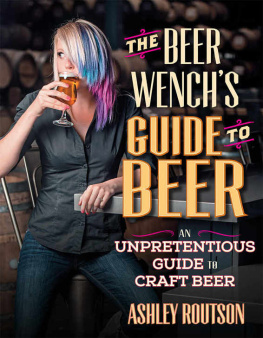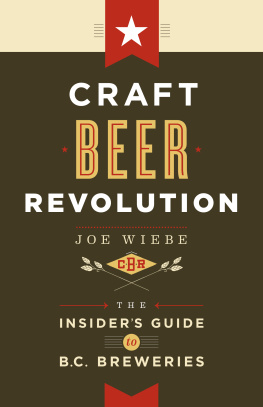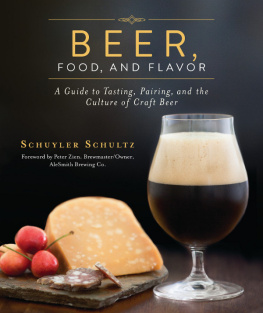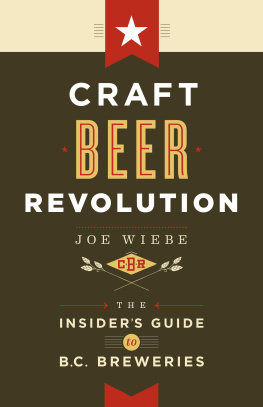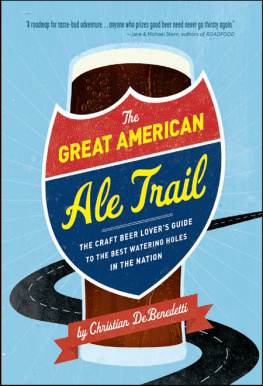The Ontario beer landscape has changed remarkably in the last year, with more breweries opening up seemingly every week. For the second edition of the Ontario Craft Beer Guide , we have included all of the ones that have opened and released beer in that time. Additionally, a lot can happen in a year for an ever-evolving business, so we have revised the core list of breweries from the first edition, taking changes of staff, brewing direction, ownership, and closures into account and updating tasting notes where (frequently) necessary.
We have also included a section detailing the story of Ontario beer ingredients to add to the context set down by the chapter on Ontarios craft beer history. This allows us to further present the narrative of Ontario beer so you, the beer drinker, can see where we started, how far weve come, and where we stand now.
During the development of this edition, we have also greatly expanded on the recommended pubs list, from fifty listings to just over one hundred, providing a better range of options for you to explore on a night out.
Finally, we have included a photo section to provide a visual representation of the diversity and range found in Ontario beer.
Introduction
Until very recently, Ontarios craft beer scene was a fairly manageable affair. The explosion of small breweries that has taken place since 2007 means that it has become very difficult, even for beer writers covering the province, to keep track of what exists, let alone how everything fits together. While it is excellent to have an up-to -date list of breweries from across the province, it became apparent to us in mid-2014 that additional context and information was required if anyone was going to be able to navigate the huge amount of choice that currently exists in the marketplace.
So, in a climate where new breweries are popping up at a rate of one a week, the most frequent question we were asked when writing this book was, How did you know when to stop? We chose to make the cut-off point for inclusion three weeks before we had to hand in the manuscript for this book, approximately December 15, 2016. Such a cut-off was needed; otherwise, our editors would have suffered more headaches than they get now from emails requesting late additions.
The second most frequent question, and perhaps one of the more loaded ones, was, How are you defining what makes a craft brewery?
As many know, there are a lot of definitions out there, from making small amounts of beer to being independently owned to being community focused. In this book we have included just about any brewery that might be considered craft, which means breweries, brewpubs, and contract breweries. In all cases, we have denoted the difference in types of business for the sake of clarity. Because contracting is sometimes used as a first step for a brewery before moving into its own facility, some are listed as transitional.
In cases in which a brewery has been purchased at some point in the past by a large multinational company, we have included them but made a note of the ownership. The historical context that breweries like Creemore and Mill Street have provided for the craft beer scene in Ontario cannot and should not be ignored.
The purpose of this guide is to assist you in navigating Ontarios craft beer market and finding something that you might like to drink. Each brewerys entry is composed of its contact information and coordinates, a brief biography to help give a sense of the brewerys identity, and a series of tasting notes and ratings for the beers that it has on offer.
In producing tasting notes and ratings, we have strived for fairness. That being said, we have offered brewers every opportunity to put their best foot forward by directly consulting with them to see which beers (usually capped at eight examples) they feel best celebrate who they are. In the majority of the entries, weve used samples directly from the brewery itself, avoiding any potential problems that might arise from tasting the beer from dirty tap lines in a bar or pub or from bottles or cans that have gone stale as a result of languishing too long on the shelves of a retail establishment.
A Word About the Rating System in This Book
In producing ratings, we have been mostly interested in three things: whether the beer has objective flaws, how well the flavour profile works, and how well the beer accomplishes what it sets out to do, i.e., the extent to which it is what the brewers claim it to be.
Beer preference is subjective. You may like a certain style of beer more than another for just about any reason, and youre not wrong to feel that way. Brewing quality is not subjective. Beer frequently has technical flaws or undesirable qualities that can leave an unpleasant impression. In the case of flavour defects, these might include the presence of diacetyl (which smells like buttered popcorn, leaves a slick, butterscotchy mouthfeel, and causes hangovers), dimethyl sulfide (an aroma of creamed corn, canned vegetables, or tomato sauce), acetaldehyde (overwhelming green apple), butyric character (blue cheese or baby vomit), inappropriate phenolic character (smoke, burnt plastic, or Band-Aid), or just a lack of conditioning resulting in rough, unpleasant mouthfeel. The beer may be inappropriately carbonated or under-attenuated (containing residual sugars that ought to have been fermented).


